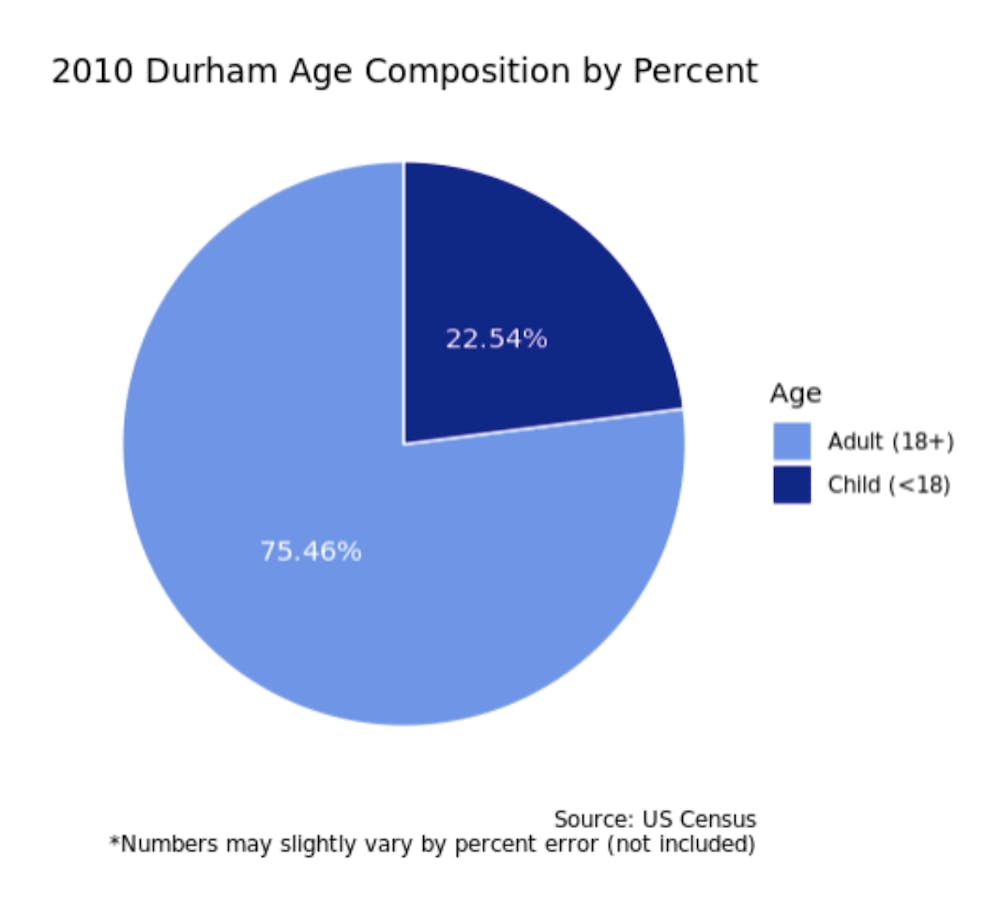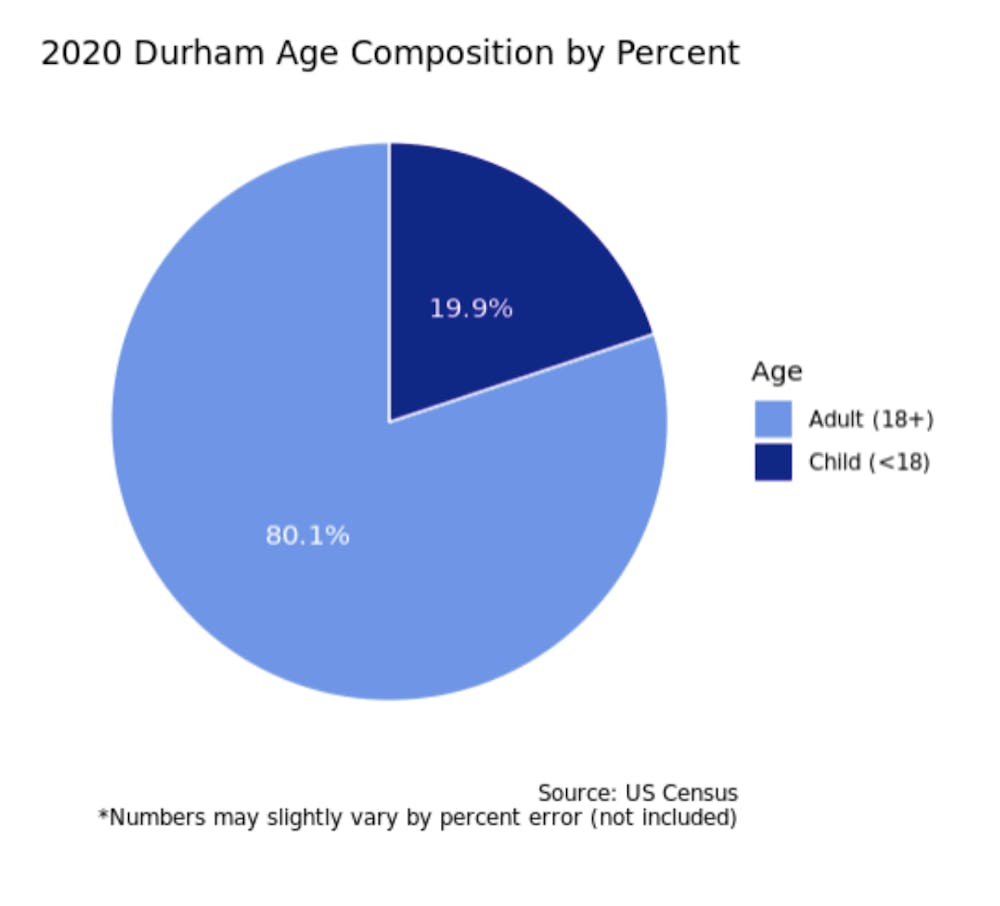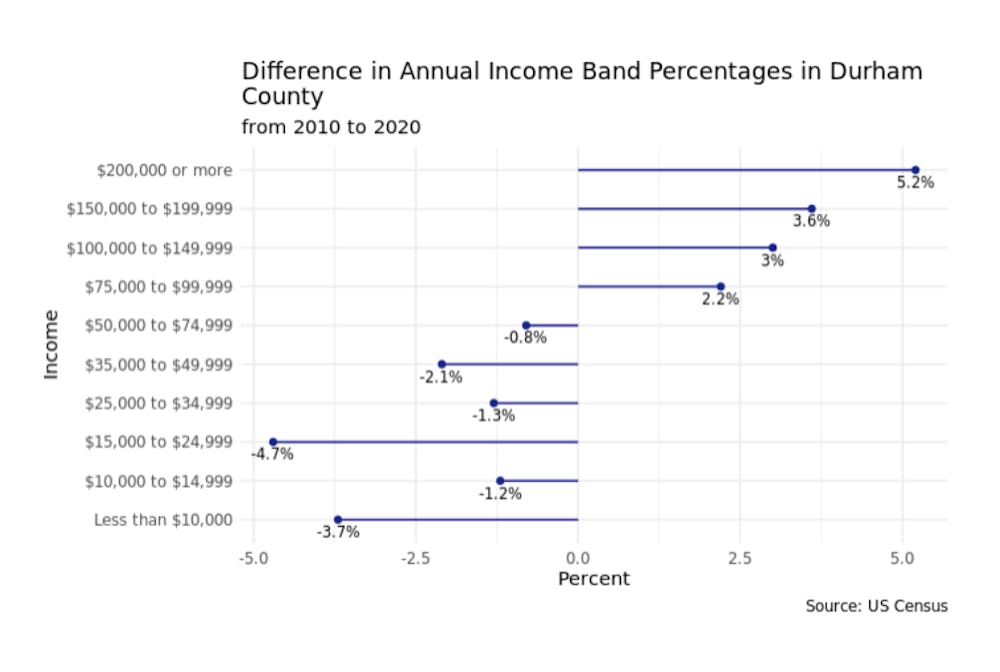Durham County has changed significantly over the past decade, experiencing urban revitalization, gentrification and economic shifts toward the technology and innovation industries. These changes have attracted new faces looking for opportunity in the booming Research Triangle.
How has the population of Durham County been affected by these developments? To answer this question, The Chronicle investigated changes in Durham’s population and income over the last 10 years using 2020 U.S. Census Data.
Racial Composition
The racial and ethnic composition of Durham County’s population has evolved over the past 10 years.

The percentage of Black people in the population decreased from 37.5% in 2010 to 33.6% in 2020. In contrast, the percentage of Hispanic, Asian and Other/Multiracial categorized people has increased.
Gentrification could be a factor in the percentage decrease of Black Durhamites, according to John Quinterno, visiting professor of the practice in the Sanford School of Policy.
“You’re seeing a cycle of people moving in, a cycle of gentrification, you’re seeing displacement of lower-income residents with higher-income residents,” Quinterno said. “Many of the lower-income people being displaced are people of color.”
As wealthier people arrive in Durham, drawn by the area’s downtown revitalization and technological boom, working-class people of color are forced to sell their homes in historic neighborhoods, driven by an increase in housing costs and property taxes.
“The decreasing proportion of Black people is probably due to a variety of things,” said Robert Korstad, professor emeritus of public policy. “The increase in housing prices has driven some people out of town, the rent’s gone too high, it’s impossible for some people to buy homes… that’s probably the driving force.”
Age
The U.S. Census also showed an increase in the percentage of adults in the population of Durham County.


In 2010, adults made up 75.46% of the population, while children under 18 made up 22.54%. In 2020, 80.1% of Durham residents were adults, compared to 19.9% of children. The growth in the percentage of adults and decrease in percentage of children may suggest that more adults without children have moved to Durham County over the past decade.
National age and fertility trends may have also played a role in this increase. Quinterno explained that the median age of the U.S. population has been rising. Also, the 2008 recession correlated with a drop in fertility, which could have lowered birth rates from 2010 to 2020.
Income Levels
Durham County's overall population seems to have experienced an increase in income from 2010.

The percentage of Durham residents reaching the higher income bands—from $75,000-99,000 to $200,000 or more—has increased from 2010. There has also been a decrease in the percentage of residents in the lower income bands.
To explore whether these increases are particular to Durham or reflective of national and state-level income growth, The Chronicle compared the percent change in median household income for Durham County, the state of North Carolina, and the U.S. from 2010-2019 using data from the Census Bureau’s American Community Survey.

Both North Carolina and the U.S. experienced income increases of 9.92% and 11.74% respectively. Durham County achieved the highest percent change in income, 15.92%.
These increases in income are consistent with the economic redevelopment and gentrification that is and has been occurring in Durham, as lower-income people are displaced by those with higher incomes, according to Quintero.
Korstad said the rise in income levels can be traced to Durham’s evolution from a blue-collar town to more of a white-collar one. The city is offering more high-paying jobs, while those who work at the lower end of the pay scale sometimes must move out of town.
As Durham continues to grow over the next 10 years, Korstad says he believes these changes “will be accelerated over the next decade as well.”
“My guess is that Durham is going to be an even more white-collar, middle/upper income, particularly the city but increasingly the country too, population,” he said.
Get The Chronicle straight to your inbox
Signup for our weekly newsletter. Cancel at any time.

Sana Pashankar is a Trinity senior and a staff reporter of The Chronicle's 118th volume.

